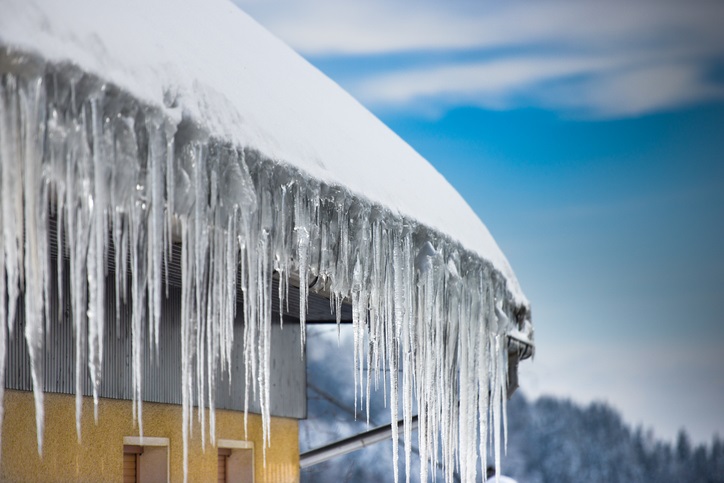Preparing Your Roof for Winter
A Plano Roofing Company is reminding you, that winter is just around the corner, so make sure to get your snow shovels and salt handy. Bring your delicate plants indoors, and weatherize your outdoor appliances. Once you’re set, there’s one more thing you’ll need to think about. That’s getting your roof ready for winter.
Roof Vulnerabilities To Winter Weather
The winter season can be just as destructive to a roof as relentless rain or unending winds, mainly because of snow and ice buildup, cold temperatures, and trapped moisture. While you can’t control the weather, there are some key steps you can take to prepare your roof for these conditions.

Snow And Ice Buildup
Snow and ice accumulate on a roof quickly when it has nowhere to go. Clogged gutters may be the number one culprit contributing to unwanted moisture on the roof. If water from melting snow and ice has nowhere to go, it may end up refreezing, adding to the existing mass of snow which will now take longer to melt, and putting unwanted stress on the underlying supporting structure of the roof.
Before winter comes, make sure your gutters and downspout are clean and clear of leaves and other debris. If you have a low-pitched roof on a one-story home, you may easily be able to clear the roof of the ice or snow yourself. If however, you live in a house with a steep pitch that’s more than a story up, consider hiring someone to remove the snow when the buildup becomes too heavy.

Cold Temperatures
If you live in an area of the country where icy conditions are a regular occurrence, your roof may be prone to premature wear and tear season after cold weather season. Flashing and seams may become aged and brittle because of constant exposure to frigid conditions. Inspect your flashing and consider replacing it when its structure is no longer reliable. Also, look for loose or missing shingles, as sometimes the adhesive can deteriorate over time due to repeated bouts of cold weather.
Trapped Moisture
Trapped moisture happens when multiple many snowfall occurrences happen in a row with little chance for melting in between. Precipitation may melt under the ice or snow buildup because the roof is warmer than the ice above. If there are any cracks or holes in the roof, this moisture will find its way through it.
Inspecting your roof for leaks and holes before winter arrives is crucial to protect it from moisture buildup. You can accomplish this by hiring a roofing inspector or by doing it yourself. If you do it yourself, do it safely. Have someone spot you as you climb the ladder to inspect the roofline of the home.
Check your roof for loose or missing shingles and damaged or unsecure flashing, paying close attention to the seams of your roof in the valleys and peaks and around vents, chimneys, and other areas. If you have access to your attic, take a close look at the underside of the roof, inspecting it for points of light or dark spots that indicate access spots for trapped moisture.
If you prepare before Winter comes you can save yourself for costly damage. WInterizing your roof helps you roof be more energy-efficient and help keep the whole house warmer and safer!
Have you prepared your roof for winter yet? Do you have any tips of suggestions that would be helpful if so please share them in the comment section!

Pingback: Protecting Your Home From Winter Water Damage